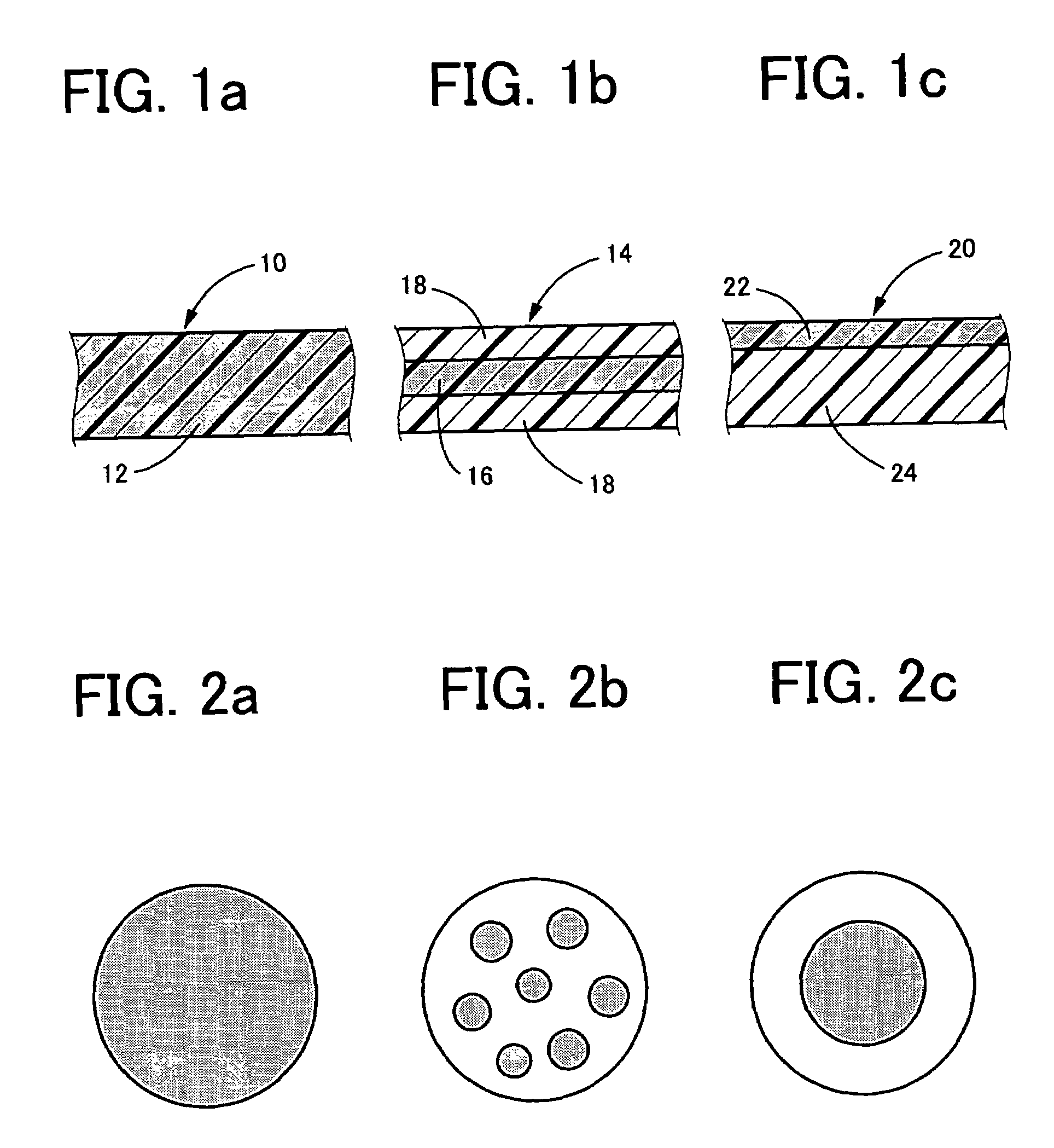Photochromic contact lens having excellent discoloring characteristic
a contact lens and photochromic technology, applied in the field of photochromic contact lens having excellent discoloring characteristic, can solve the problems of insufficient time for inability to achieve driving effects, and inability to complete the discoloration of conventionally used photochromic contact lens from a colored state to an uncolored state in a sufficiently short period of time. , to achieve the effect of remarkably shor
- Summary
- Abstract
- Description
- Claims
- Application Information
AI Technical Summary
Benefits of technology
Problems solved by technology
Method used
Image
Examples
example 1
[0042]There were obtained methyl methacrylate (MMA), and tris(trimethylsiloxy)silylpropyl methacrylate (SK-5001), as the monomers, which provide the polymeric material to form the contact lens. There was also obtained ethyleneglycol dimethacrylate (EDMA) as the cross-linking agent, while azobisisobutyronitrile (AIBN) was obtained as the polymerization initiator. Further, there was obtained 1,3-dihydro-1,3,3-trimethylspiro[2H-indole-2,3′-[3H]naphth[2,1-b][1,4]oxazine] (Photo-1), as the photochromic dye.
[0043]Each of SK-5001, MMA, EDMA, AIBN and Photo-1 was put into predetermined containers (test tubes) for the polymerization after each component was weighed on the scale, so that each component in the mixture had the respective ratio as described in the TABLE 1 below. Subsequently, the test tubes, which contain the respective polymerizable components, were heated in a constant temperature bath at 35° C. for 40 hours. Then the temperature was increased to 50° C. and kept at 50° C. for ...
example 2
[0046]The contact lenses were formed by the polymer, which was polymerized by a method similar to that of the above EXAMPLE 1, except that 1′,3′-dihydro-1′,3′,3′-trimethyl-6-nitrospiro[2H-1-benzopyran-2,2′-(2H)-indole] (Photo-2) was used as the photochromic dye. There were evaluated the second-order transition (Tg), oxygen permeation coefficient (Dk), the time when the coloration begins, and the time needed for the discoloration, similar to the above EXAMPLE 1, and the results were shown in the TABLE 2 below.
[0047]
TABLE 2SamplesNo. 7No. 8No. 9No. 10No. 11No. 12CompositionSK5001020406080100(parts by weight)MMA100806040200EDMA555555AIBN0.050.050.050.050.050.05Photo-20.030.030.030.030.030.03CharacteristicsTg (° C.)132.3121.1113.868.556.818.2Dk0204075158250Time whenJustJustJustJustJustJusttheafter theafter theafter theafter theafter theafter thecolorationirradiationirradiationirradiationirradiationirradiationirradiationbeginsTime1300120011001000800500needed forthediscoloration(seconds)
example 3
[0048]There were obtained tris(trimethylsiloxy)silylpropyl acrylate (SK-5021), silicon urethane macromer (MAUS), which was synthesized by a method similar to the method of Example 1 of JP-A-2001-72739, and SK-5001, as the silicon-containing monomer. There was also obtained 2,2,2-trifluoroethyl methacrylate (3FEA) as the fluorine-containing monomer. Moreover, there were obtained N,N-dimethylacrylamide (DMAA), vinyl acetate (Vac), hydroxyethyl methacrylate (HEMA), as the hydrophilic components. Further, allyl methacrylate (AMA) and EDMA were obtained as the cross-linking agent, while 2-hydroxy-2-methyl-1-phenylpropane-1-one (Darocure 1173) and AIBN were obtained as the initiator.
[0049]Each of thus obtained components were mixed in accordance with the ratio as shown in the TABLE 3 below, and the polymerizable compositions were obtained and numbered as Nos. 13 to 15. The sample Nos. 13 and 14 were subjected to the above-mentioned photopolymerization, while the sample No. 15 was subjecte...
PUM
| Property | Measurement | Unit |
|---|---|---|
| transition point | aaaaa | aaaaa |
| second-order transition point | aaaaa | aaaaa |
| second-order transition point | aaaaa | aaaaa |
Abstract
Description
Claims
Application Information
 Login to View More
Login to View More - R&D
- Intellectual Property
- Life Sciences
- Materials
- Tech Scout
- Unparalleled Data Quality
- Higher Quality Content
- 60% Fewer Hallucinations
Browse by: Latest US Patents, China's latest patents, Technical Efficacy Thesaurus, Application Domain, Technology Topic, Popular Technical Reports.
© 2025 PatSnap. All rights reserved.Legal|Privacy policy|Modern Slavery Act Transparency Statement|Sitemap|About US| Contact US: help@patsnap.com

